Author: Jacob Zhao
The crypto market has been lackluster recently, and conservative and stable returns have once again become the market demand. Therefore, based on my investment experience in recent years and the results of my concentrated research in the field of stablecoins at the end of last year, I would like to talk about the old but evergreen topic of stablecoin returns.
The current stablecoin categories in the crypto market are mainly the following:
- USDT, which is conditionally compliant but has the highest market share: its application scenarios are broad enough (currency trading pairs on exchanges, payroll for crypto companies, real international trade and offline payment scenarios), and users hope that it is too big to fail and that Tether has the ability to provide a safety net.
- Compliance stablecoins pegged 1:1 with fiat currencies: USDC has the most chains and application scenarios supporting it and is a true on-chain dollar, while the application scenarios of other compliance stablecoins such as PayPal USD and BackRock USD have certain limitations.
- Overcollateralized stablecoins: mainly MakerDAO’s DAI and its USDS after upgrading to Sky Protocol; Liquity’s LUSD has become one of the competing products with its micro-innovation of 0 collateralized lending rate and 110% low pledge rate.
- Synthetic asset stablecoins: The most representative of this cycle is the phenomenal Ethena’s USDe. Its model of obtaining income through arbitrage of funding rates is also one of the stablecoin income models that will be analyzed in detail later in this article.
- RWA stablecoins whose underlying assets are US Treasury bonds: Usual's USD0 and Ondo's USDY are the most representative in this cycle. Usual's USD0++ provides liquidity for US Treasury bonds, which is similar to Lido's innovation for ETH Staking.
- Algorithmic stablecoins: Terra’s UST track was basically falsified after its collapse. Luna lacked real value to support the token price, and it decoupled and finally collapsed after a death spiral of plummeting and selling and then plummeting. FRAX’s algorithmic stablecoins and over-collateralization model still have some application scenarios, while the rest of the algorithmic stablecoins have no market influence.
- Non-USD stablecoins: Euro stablecoins (Circle's EURC, Tether's EURT, etc.) and other fiat stablecoins (BRZ, ZCHF, HKDR, etc.) currently have little impact on the USD-dominated stablecoin market. A non-USD over-collateralized stablecoin project that the author once invested in has basically gone to zero. The only way out for non-USD stablecoins is payment services under a compliance regulatory framework rather than being used in the native crypto community.
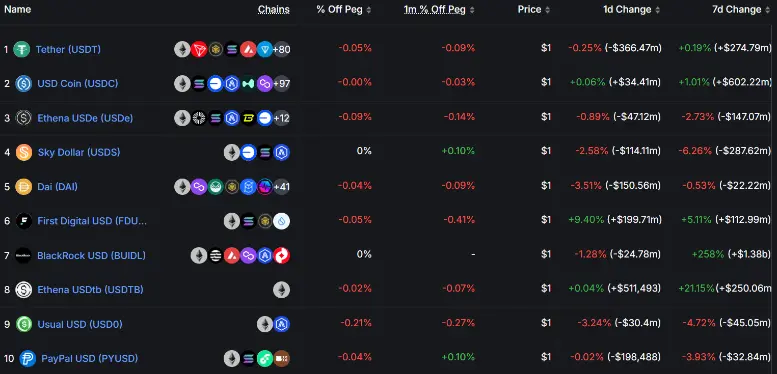
Stablecoin Market Cap Ranking
Data source: https://defillama.com/stablecoins
At present, the main types of models for obtaining income through stablecoins are as follows. This article will further analyze each type of income in detail:
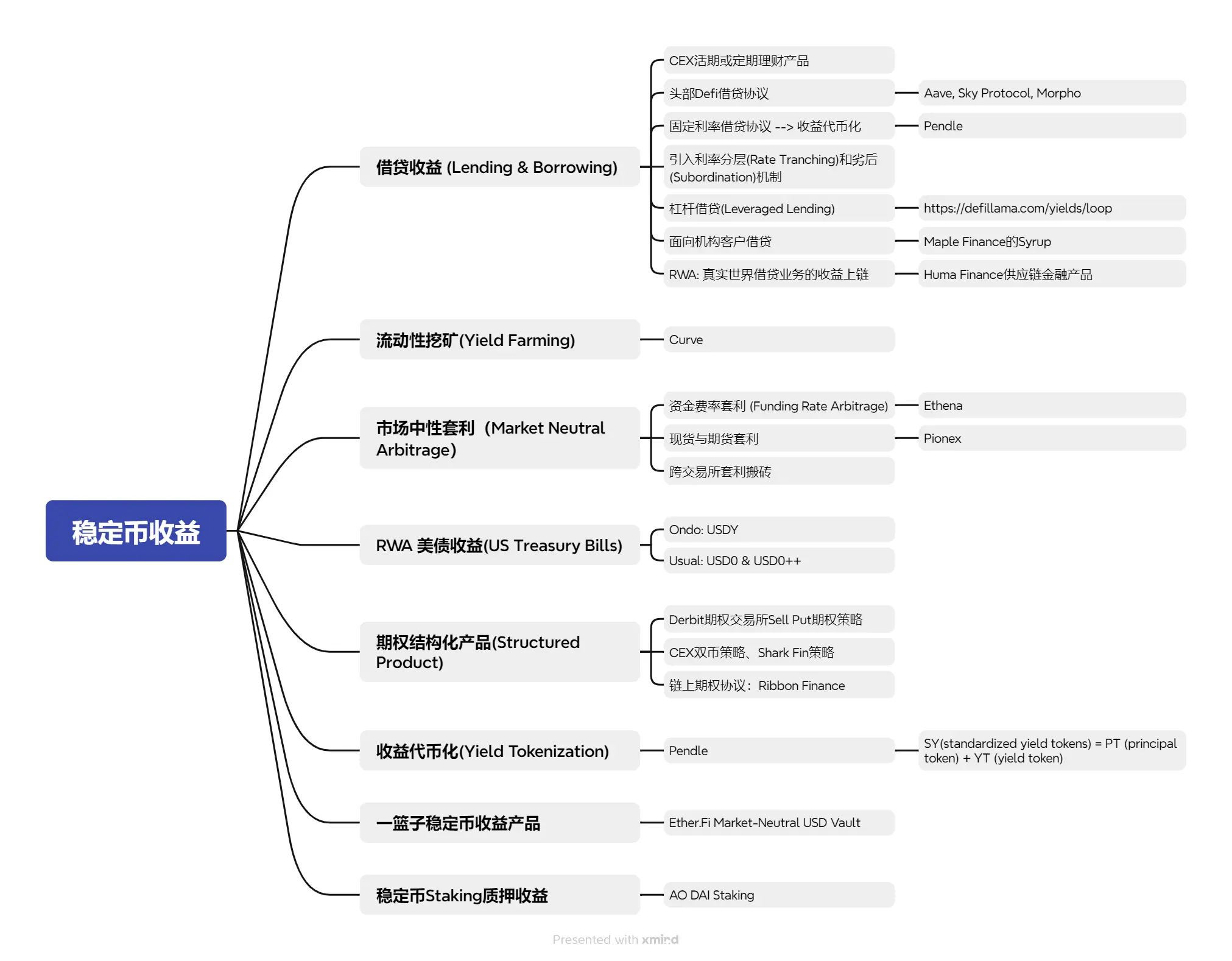
1. Stablecoin Lending & Borrowing:
As the most traditional financial income model, lending essentially generates income from the interest paid by the borrower, and it is necessary to consider the security of the platform or protocol, the probability of borrower default, and the stability of income. The stablecoin lending products currently on the market are:
- The Cefi platform mainly provides current financial products of leading exchanges (Binance, Coinbase, OKX, Bybit)
- The top Defi protocols include Aave, Sky Protocol (the upgraded brand of MakerDAO), Morpho Blue, etc.
The platform security of the top exchanges and top Defi protocols that have experienced the test of cycles is relatively high. During the rising market, due to the strong demand for lending, the U current account income can easily soar to more than 20%, but during the quiet market period, the general income is low and maintained at 2%-4%. Therefore, the current loan interest rate (Flexible Interest) is also a very intuitive market activity indicator. Fixed interest lending sacrifices liquidity, so most of the time the income is higher than the current account, but it cannot capture the surge in current account income during the active market period.
In addition, there are some micro-innovations in the overall stablecoin lending market, including:
- Fixed-rate lending Defi protocol : The Pendle protocol, which is very representative of this cycle, started with fixed-rate lending and ended up with tokenized returns. This article will introduce it in detail later. Although early fixed-rate Defi projects such as Notional Finance and Element Finance did not succeed, their design concepts are worth referring to.
- Introducing interest rate tranching and subordination mechanisms in lending;
- DeFi protocol that provides leveraged lending ;
- Defi lending protocols targeting institutional clients , such as Maple Finance's Syrup, derive their revenue from institutional lending.
- RWA puts the revenue of real-world lending businesses on-chain, such as Huma Finance’s on-chain supply chain finance products.
In short, lending business, as the most traditional financial income model, is easy to understand and carries the largest amount of funds and will continue to be the main stablecoin income model.
2. Yield Farming Benefits:
Curve is a representative example, and its revenue comes from the fees and token rewards distributed to LPs by AMM transactions. As the holy grail of stablecoin DEX platforms, Curve has become an important indicator for measuring the adoption of new stablecoins in the industry as a stablecoin supported by Curve Pools. The advantage of Curve mining is its extremely high security, but its disadvantage is that the income is too low and unattractive (0-2%). If non-large and long-term funds participate in Curve's liquidity mining, the income may not even cover the transaction Gas Fee.
Uniswap's stablecoin pool trading pairs face the same problem. Uniswap's non-stablecoin trading pairs have the possibility of liquidity mining losses, and other smaller DEX stablecoin pool trading pairs still have Rug Pull concerns even if the returns are higher, which does not conform to the principle of prudent and stable stablecoin financial management. We can see that the current Defi stablecoin pool is still dominated by the lending model, and Curve's most classic 3Pool (DAI USDT USDC) is only ranked in the top 20 in TVL.
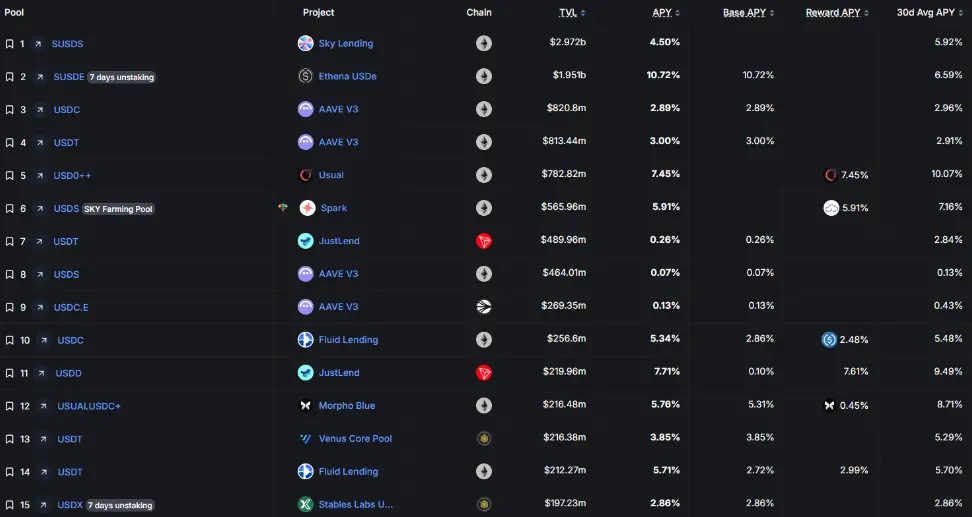
Stablecoin Pool TVL Ranking
Source: https://defillama.com/yields?token=ALL_USD_STABLES
3. Market neutral arbitrage income:
Market neutral arbitrage strategies have long been widely used in professional trading institutions. By holding long and short positions at the same time, the net market exposure of the investment portfolio is close to zero. The main ones for Crypto are:
- Funding Rate Arbitrage: Perpetual Futures have no expiration date, and their prices are kept consistent with spot prices through the Funding Rate mechanism. Funding rates need to be paid regularly to shorten the short-term price difference between spot and perpetual futures.
- When the perpetual contract price is higher than the spot price (premium), longs pay shorts and the funding rate is positive.
- When the perpetual contract price is lower than the spot price (discount), shorts pay longs and the funding rate is negative.
- According to historical retracement data, the probability of a positive funding rate is greater than the probability of a negative funding rate in the long term. Therefore, the main source of income is spot buying in a positive funding rate scenario, shorting perpetual contracts, and collecting fees paid by longs.
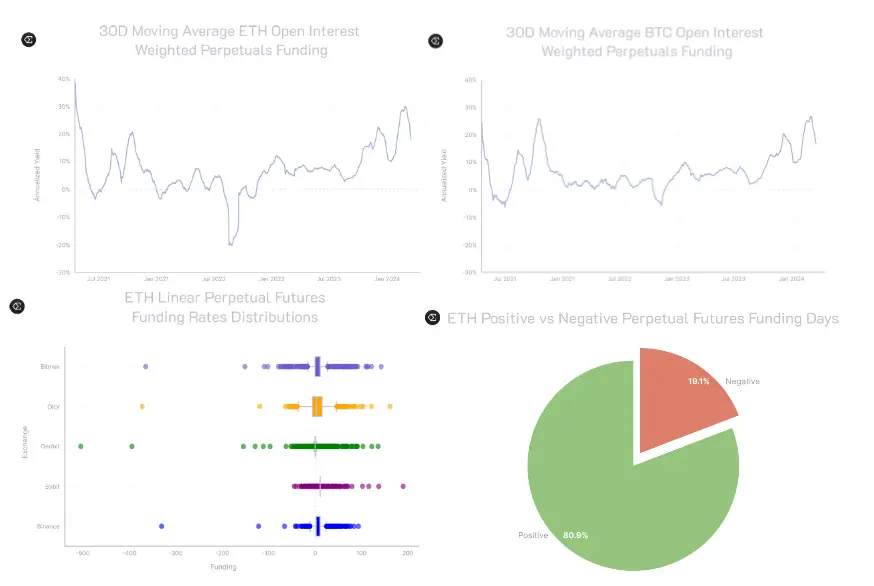
- Cash-and-Carry Arbitrage: Cash-and-Carry Arbitrage uses the price difference between the spot market (Spot) and the expiring futures market (Futures) to lock in profits by hedging positions. The core concept is "basis", which is the difference between the expiring futures price and the spot price. It is usually operated in the contango (futures price is higher than spot) or backwardation (futures price is lower than spot) market. Cash-and-Carry Arbitrage is suitable for investors with large funds, who can accept the lock-up period and are optimistic about the convergence of basis, and is common among traders with traditional financial thinking.
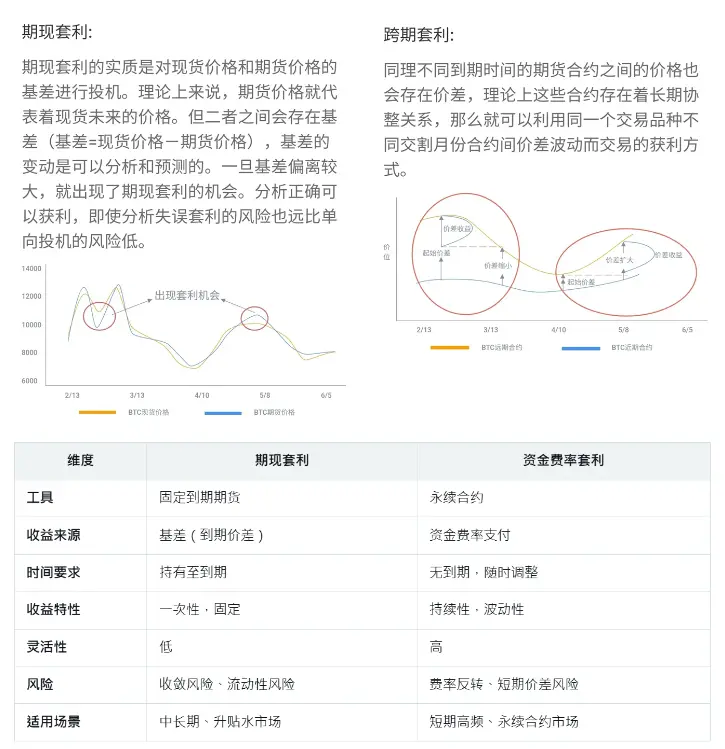
- Cross-exchange arbitrage: Using price differences between different exchanges to build neutral positions is the mainstream arbitrage method in the early days of the Crypto industry. However, the current price spreads of mainstream trading pairs between different exchanges are already extremely low. It requires reliance on automated arbitrage scripts and is more suitable for highly volatile markets and small-cap coins. The threshold for retail investors to participate is high, so you can refer to the Hummingbot platform.
- In addition, there are arbitrage models such as triangular arbitrage, cross-chain arbitrage, and cross-pool arbitrage in the market, which will not be further expanded in this article.
Market-neutral arbitrage strategies are mostly limited to professional investors due to their high level of professionalism. The emergence of Ethena in this cycle has moved the mature model of "Funding Rate Arbitrage" to the chain, allowing ordinary retail users to participate.
When users deposit stETH in the Ethena protocol, they will receive an equivalent amount of USDe tokens through Mint. At the same time, they can open an equivalent amount of short orders on centralized exchanges to hedge and earn positive funding rates. According to historical statistics, more than 80% of the time there is a positive funding rate, and in the case of a negative funding rate, Ethena will make up for the loss through reserves; more than 65% of the Ethena protocol's income hedges the funding rate, and there is also some Ethereum Staking, on-chain or exchange lending income (35%) as supplementary income; in addition, user assets are entrusted to a third-party custodian OES (Off Exchange Settlement) and audit reports are issued regularly, effectively isolating the exchange platform risks.
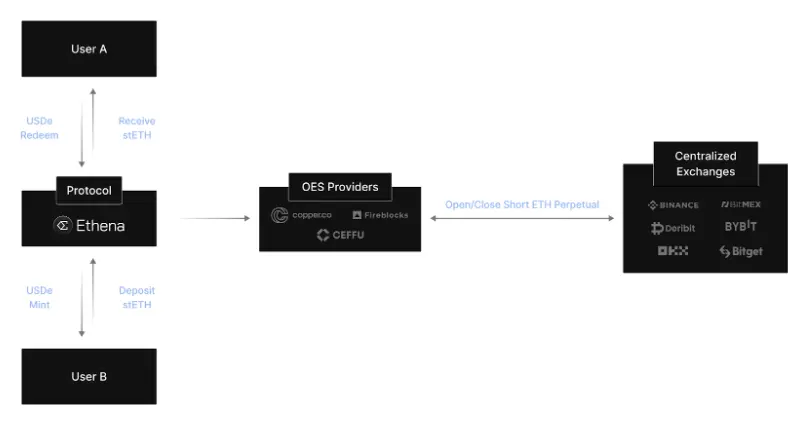
Regarding the Ethena risk, apart from the uncontrollable factors of the project party such as accidents between the exchange platform and the custodian, the security issues of the smart contract or the decoupling of the anchored assets, the more important core point is "the loss under the long-term negative funding rate scenario and the agreement reserved funds cannot cover it". According to the retracement of historical data, we can understand that the probability is low. Even if it happens, it means that the "funding rate arbitrage" trading strategy generally used in the industry will fail. Therefore, under the premise that the team does not do evil, the Ethena protocol will not have the death spiral mode of the Terra algorithm stablecoin, but it is possible that the high yield of the token subsidy will gradually decline and return to the normal arbitrage income range.
At the same time, we have to admit that Ethena has achieved the greatest degree of data transparency. On the official website, you can clearly query historical returns, funding rates, positions in different exchanges, and monthly custody audit reports, which is better than other funding rate arbitrage products on the market.
In addition to Ethena's "funding rate arbitrage" model, Pionex Exchange also has a stablecoin wealth management product with a "term arbitrage" model. Unfortunately, apart from Ethena, there are not many market-neutral arbitrage products on the market that retail customers can participate in with a low threshold.
4. US Treasury Bills
The Fed's interest rate hike cycle in 2022-2023 will push the US dollar interest rate to more than 5%. Even though it has now turned to gradual interest rate cuts, the US dollar interest rate of more than 4% is still a rare asset target that combines high security and high returns in the traditional financial industry. The RWA business has high compliance requirements and a heavy operation model. US Treasury bonds, as a standardized target with high trading volume, are one of the few RWA products with established business logic.
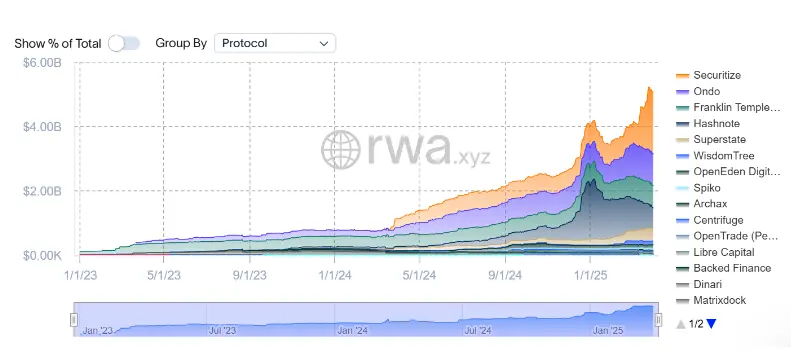
Ondo, which uses U.S. Treasuries as its underlying assets, has a yield of 4.25% for its USDY for non-U.S. general retail customers and OUSG for U.S. institutional qualified customers. It is the leader in the RWA track in terms of multi-chain support and ecological applications, but is slightly inferior to FOBXX launched by Franklin Templeton and BUIDL of BlackRock in terms of regulatory compliance. The Usual protocol, which has emerged as a dark horse in this cycle, has added a liquidity token USD0++ on top of USD0, which uses a basket of U.S. Treasuries as the underlying asset. This is similar to Lido's staking on Ethereum, providing liquidity for U.S. Treasuries locked for 4 years, and can participate in stablecoin liquidity mining or lending pools to obtain additional income.
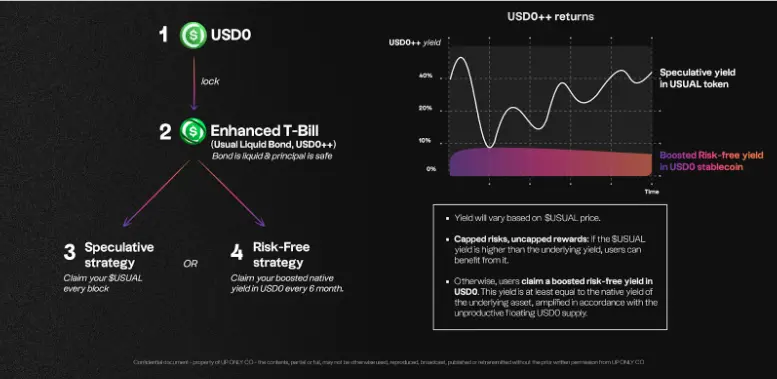
It should be pointed out that the returns of most U.S. Treasury RWA projects are stable at around 4%, while the higher returns of the Usual stablecoin pool mainly come from Usual token subsidies, Pills (Point) incentives, liquidity mining and other speculative additional returns that are not sustainable. As the U.S. Treasury RWA project with the most complete Defi ecosystem, it still faces the risk of slowly declining returns in the future but not to the point of a sudden collapse.
Although the price decoupling and sell-off caused by the redemption mechanism adjustment of USD0++ in early 2025 was rooted in the misalignment between its bond attributes and market expectations and governance errors, its liquidity design mechanism as an industry innovation is still worthy of reference for other US Treasury RWA projects.
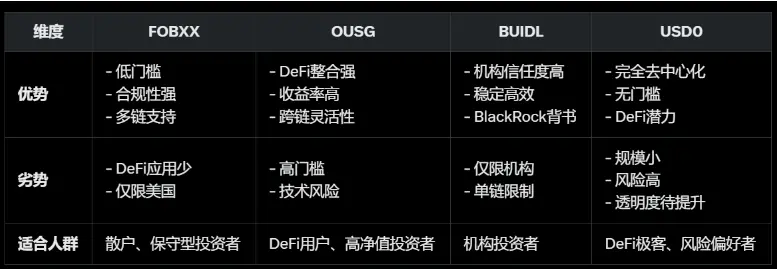
5. Structured Product
The structured products and dual-currency strategies currently popular in most centralized exchanges are derived from the Sell Put or Sell Call strategies of "selling options to earn premiums" in option trading. U-based stablecoins are mainly Sell Put strategies, and the income comes from the option premium paid by the option buyer, that is, earning stable USDT option premiums or purchasing BTC or ETH at a lower target price.
In actual practice, the option selling strategy is more suitable for the range-bound market, with the Sell Put target price being the lower limit of the range and the Sell Call target price being the upper limit of the range; for a unilateral rising market, the option premium income is limited and it is easy to miss out, so it is more appropriate to choose Buy Call; for a unilateral falling market, Sell Put is likely to become a state of continuous loss after buying halfway up the mountain. For novices in option selling, it is easy to fall into the trap of pursuing short-term "high option premium income" and ignore the risk exposure brought by a sharp drop in the price of the currency, but if the target price is set too low, the option premium yield will not be attractive enough. Combined with the author's many years of option trading, the Sell Put strategy mainly sets a lower buying target price to earn high option premium income when the market is in a state of panic, while the exchange's current loan yield is more considerable during the market's rising period.
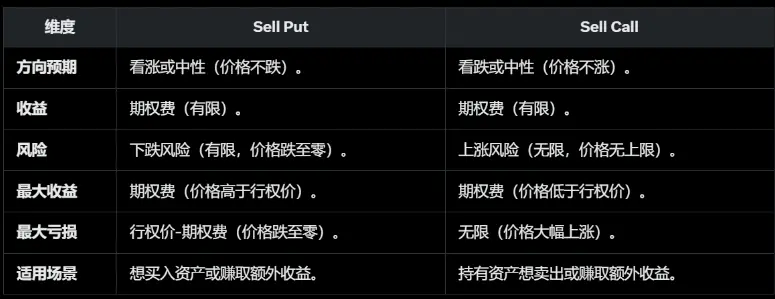
As for the Shark Fin principal protection strategy that has been popular in OKX and other exchanges recently, it adopts the Bear Call Spread strategy (Sell Call collects option premiums + Buy Call with a higher strike price limits the rise) + Bull Put Spread (Sell Put collects option premiums + Buy Put with a lower strike price limits the fall), so that the entire option portfolio earns option premium income within the range, and there is no additional income from buying and selling options outside the range to hedge each other. For users who focus on principal security and do not pursue maximizing option premiums or currency-based income, it is a suitable U-based financial management solution.
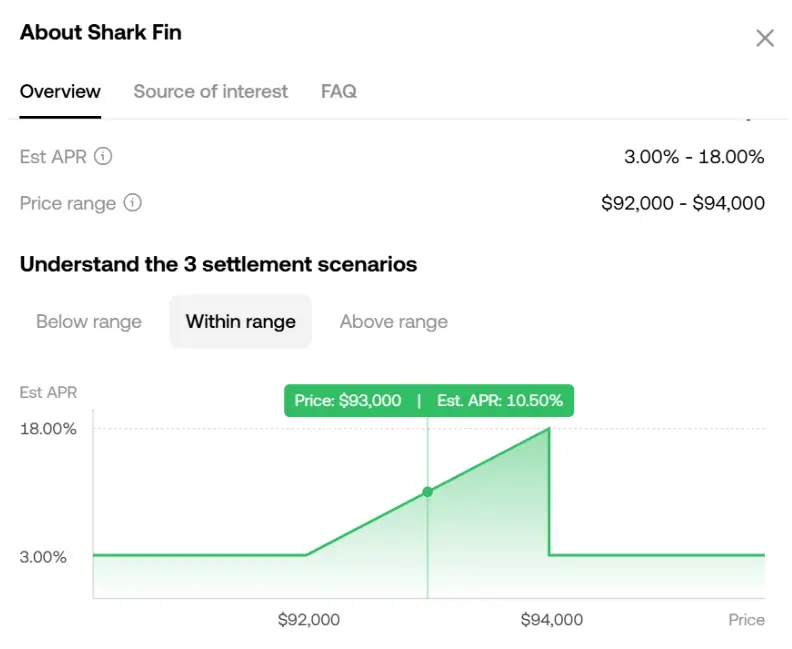
The maturity of on-chain options needs to be developed. Ribbon Finance once became the leading option vault protocol in the last cycle. Leading on-chain option trading platforms such as Opyn and Lyra Finance can also manually trade option premium strategies, but they are no longer popular now.
6. Yield Tokenization
The Pendle protocol, which is very representative of this cycle, started with fixed-rate lending in 2020 and ended with yield tokenization in 2024. By splitting the yield assets into different components, it allows users to lock in fixed income, speculate on future income, or hedge income risks.
- Standardized yield tokens SY (standardized yield tokens) can be split into the main token PT and the yield token YT
- PT (Principal Token): represents the principal portion of the underlying asset, which can be redeemed for the underlying asset at a 1:1 ratio upon maturity.
- YT (Yield Token): represents the future income portion, which decreases over time and returns to zero value after expiration.
Pendle's trading strategy is mainly:
- Fixed income: Holding PT until maturity can earn fixed income, which is suitable for risk-averse people.
- Income speculation: Buying YT is betting on rising future income, suitable for those with risk appetite.
- Hedging risk: Sell YT to lock in current profits and avoid market decline risks.
- Liquidity provision: Users can deposit PT and YT into liquidity pools to earn transaction fees and PENDLE rewards.
At present, the main stablecoin pool it promotes, in addition to the original income of the underlying assets, also superimposed YT speculation income, LP income, Pendle token incentives, Points and other incentives make its overall yield considerable. One of the shortcomings is that Pendle's high-yield pools generally have a short-term term, and cannot be operated once and for all like Staking or liquidity mining or lending pools, and requires frequent on-chain operations to change the income pool.
7. A basket of stablecoin income products:
As the leading protocol of Liquid Restaking, Ether.Fi actively embraced changes in product transformation and launched a number of income products in BTC, ETH and stablecoins after the Restaking track entered a saturated downward trend, maintaining its leading position in the entire Defi industry.
In its stablecoin Market-Neutral USD pool, it provides users with a basket of stablecoin income products such as lending interest (Syrup, Morpho, Aave), liquidity mining (Curve), funding rate arbitrage (Ethena), and income tokenization (Pendle) in the form of actively managed funds. For users who pursue stable on-chain income, have insufficient funds, and are unwilling to operate frequently, it is a way to balance high returns and risk diversification.

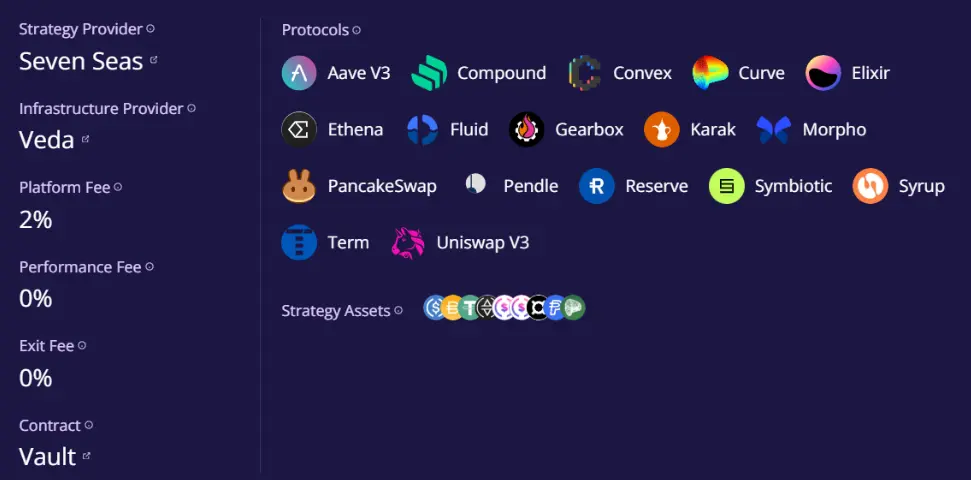
8. Stablecoin Staking Profits:
Stablecoin assets do not have the staking attribute of POS public chains such as ETH, but the AO network launched by the Arweave team accepts on-chain staking of stETH and DAI in the token Fair Launch issuance model, and DAI staking has the highest AO income capital efficiency. We can classify this type of stablecoin staking model as an alternative stablecoin income model, that is, earning additional AO token rewards on the premise of ensuring the safety of DAI assets to make a small investment, and its core risk lies in the uncertainty of AO network development and token prices.
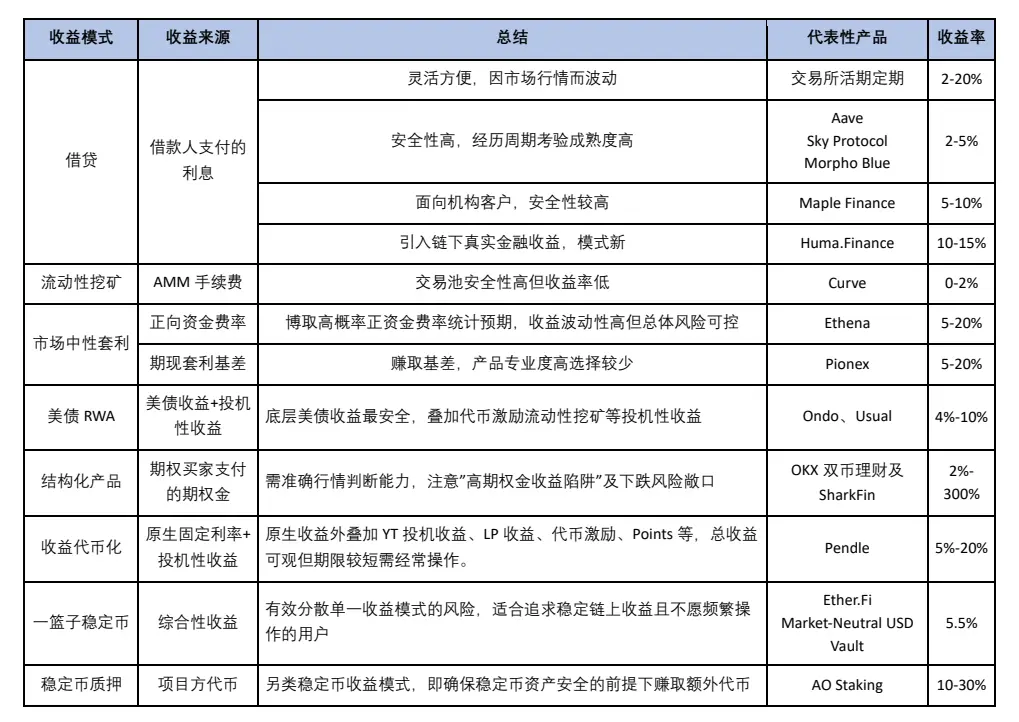
In summary, we summarize the mainstream stablecoin income model in the current crypto market as shown in the table above. Stablecoin assets are the most familiar but most easily overlooked market for crypto market practitioners. Only by understanding the source of stablecoin income and making reasonable allocations can we more calmly deal with the uncertainty risks in the crypto market on the basis of a solid financial foundation.














